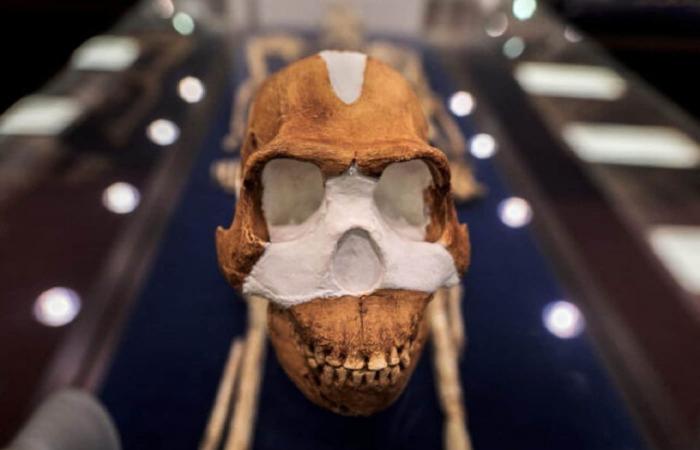⇧ [VIDÉO] You might also like this partner content
In 2023 in South Africa, world-renowned paleontologist Lee Berger and his team discovered the oldest burial site known to date. The remains that researchers found there are believed to be those of a distant relative ofA wise man : Homo star, a hominin with a brain the size of an orange. The configuration of the pits containing the bodies suggests that they deliberately buried their dead, thus undermining current knowledge of human evolution. Indeed, current theories associated with human evolution suggest in particular that a brain of a certain size is necessary in order to understand and accomplish complex sensory tasks, such as burying the dead.
The oldest burials found by archaeologists in the Middle East and Africa contained remains of Homo sapiens approximately 100,000 years old. However, the remains discovered in South Africa by Berger date back to at least 200,000 BCE, pushing back the previous record for the first traces of mortuary practices by at least 100,000 years.
It was on the paleontological site of the “Cradle of Humanity”, listed as a UNESCO World Heritage Site and located northwest of Johannesburg, that the researchers made their discovery. They later stated in a pre-published article in the journal eLife: “
These are the oldest burials ever recorded in the hominid record, predating evidence of Homo sapiens burials by at least 100,000 years. ».
:: THE T-SHIRT THAT SUPPORTS SCIENCE! ::
According to Berger’s statements, the remains found during the excavations belong to a Homo star, a primitive species at the crossroads between apes and modern humans. At least five individuals were in the fetal position, curled up, in alcoves buried about thirty meters underground. Still according to Berger’s team, the pits they were in were deliberately dug and then filled in. According to them, this is proof that the bodies of these pre-humans were deliberately buried. “ The bodies of H. naledi adults and several children younger than 13 years old were laid in the fetal position, suggesting intentional burial of the dead “, said the excavation team.
A new species discovered in 2013
The discovery by Berger himself ofHomo star dates back to 2013. At the time, it called into question linear readings concerning the evolution of Man. This new species has primitive teeth and lower limbs particularly adapted for climbing trees. Homo star also had curved toes similar to those of Homo sapiens, as well as hands certainly capable of handling tools.
See as well
The brain volume is about a third of that of Homo sapiens, no larger than a large orange. Thus, the scientists stated that “these findings show that mortuary practices were not limited to Homo sapiens or other hominids with large brains.” They also added that the burial site is not the only sign thatHomo star was capable of complex cognitive and emotional behavior. Indeed, on the smooth surfaces of a nearby cave column, engravings forming geometric figures, including a “crude cross-shaped shape”, were also discovered. “ This means that humans may not have invented such behaviors. “, said Berger.
In 2015, Berger faced opposition from the scientific community after his findings showed thatHomo star was able to perform complex tasks despite the size of his brain. However, according to him, “it was too much for the scientists of the time”. “ We’re about to tell the world it’s not true “, did he declare. However, the results of his new research still require further analysis today. “
These results, if confirmed, could be of great importance said Carol Ward, an anthropologist at the University of Missouri.






